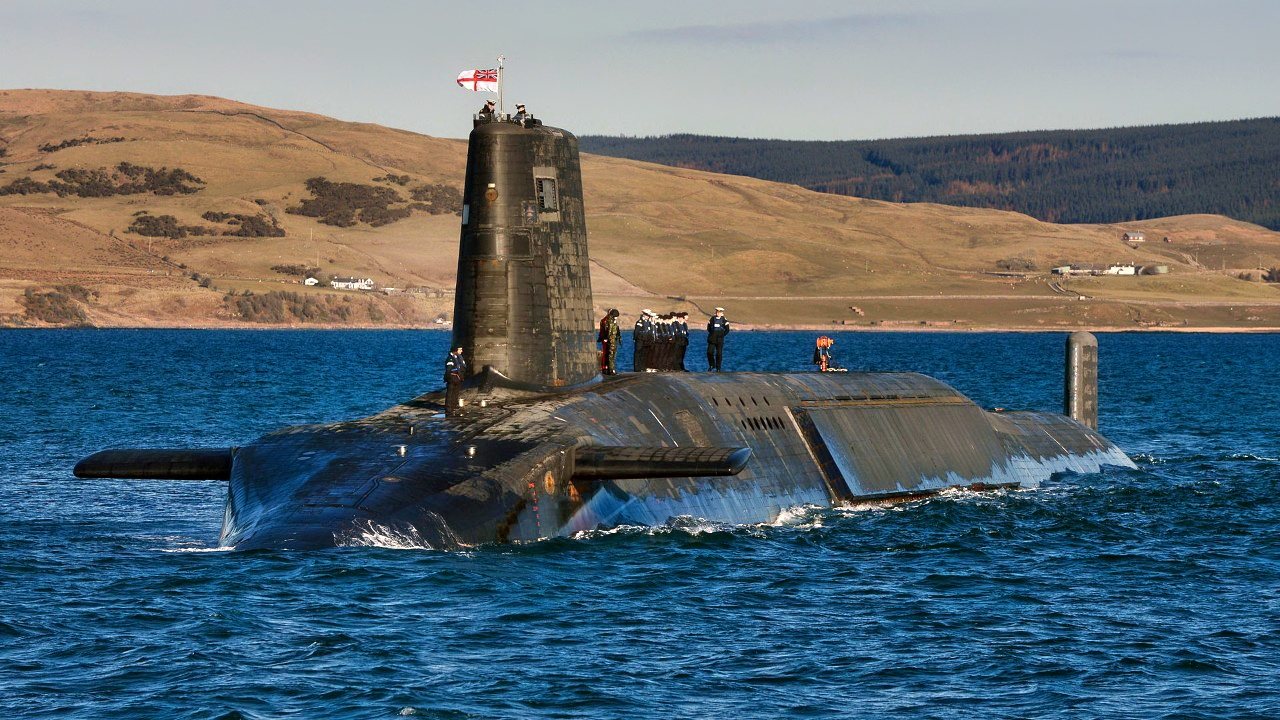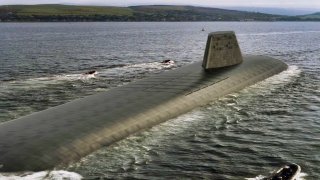The Royal Navy's Dreadnought-Class SSBN Submarine Problem Is Clear
Despite economic challenges and competing defense priorities, Britain must invest in more than the planned four Dreadnought-class subs to ensure robust defense capabilities in the Atlantic.
Summary and Key Points: Britain's new Dreadnought-class SSBNs are essential for maintaining its nuclear deterrent, set to replace the aging Vanguard-class submarines. Designed to carry Trident II/D5 ballistic missiles, these nuclear-powered subs will feature advanced sensors, increased autonomy, and artificial intelligence.

-Despite economic challenges and competing defense priorities, Britain must invest in more than the planned four Dreadnought-class subs to ensure robust defense capabilities in the Atlantic.
-By focusing on submarines rather than aircraft carriers, Britain can enhance its naval strength and strategic deterrence, addressing threats closer to home while maintaining a potent maritime presence.
Britain Needs to Get Behind Its Dreadnought-class SSBN
The Dreadnought class is a new generation of ballistic missile submarines (SSBNs) being developed for the British Royal Navy.
The lead boat in the class, HMS Dreadnought, is currently under construction. The class is intended to replace the existing force of Vanguard-class SSBNs that have been in service since the 1990s, and it will carry the United Kingdom’s nuclear weapons deterrent.
It is expected that Dreadnought will enter service in the early 2030s.
Britain has sought to replace its aging Vanguard-class submarine force since 2011, when the Dreadnought class was first announced.
Currently, the UK intends to build just four of these submarines, likely because the British military is a shadow of its former glory. Further, whatever funds the British military had at its disposal were likely blown on aircraft carrier vanity projects over the last decade.
Indeed, the Dreadnought-class submarines would have been a much better investment by Britain’s Ministry of Defense than were Queen Elizabeth and Prince of Wales.
What Can the Dreadnought-class Do?
In terms of capabilities, the Dreadnought class is a nuclear-powered submarine, giving it a great range. While it is not known specifically what the maximum range of this boat will be, it will likely be akin to that of its Vanguard-class predecessor, thereby exceeding 10,000 nautical miles.
Details on this program are murky, but what is known is that the Dreadnought class will feature a Common Missile Compartment (CMC).

According to the UK Defence Journal, “CMC aims to define the missile tubes and accompany systems that would be used to launch new ballistic missiles, successors to the current Trident II/D5 missile fleet used by the USA and Britain.”
In terms of nuclear weapons capabilities, the key element of any SSBN, British designers are expanding the diameter of each vertical launch tube from 2.21 meters to 3.04 meters, meaning the Dreadnought will have greater interoperability with its allies. The U.S. Navy’s replacement for the Los Angeles-class attack submarine, the Virginia-class Block III submarine, did something similar with their cruise missile launch tubes, installing the Common Weapon Launcher.
A Dreadnought-class submarine will carry Trident II/D5 ballistic missiles that can arm multiple nuclear warheads.
The Dreadnought-class SSBN is believed to cost Britain’s MOD the equivalent of $39.9 billion. The costs include the design, construction, and testing of these new boats. But the British have to spend gobs of their taxes on modernizing the country’s rather depressing shipyard capabilities in order to reliably build and maintain these advanced submarines.
The Dreadnought intends to employ cheaper sensors, increased autonomy, and artificial intelligence capabilities. Further, the Dreadnought-class SSBN is expected to carry a crew of around 130.
Britain Isn’t a Superpower Anymore
Britain has yet to come to grips with the fact that it is no longer the world’s superpower. Indeed, it is a middle power in relative decline. Their budgets do not comport with their lofty ambitions.
For example, British strategists still speak seriously about going “East of Suez” with their two-aircraft carrier fleet. Yet at the same time, they struggle to maintain these two ships and are faced with significant threats much closer to their shores, emanating from Russia, but also from Argentina in relation to the Falkland Islands, an issue that has never been fully resolved.
The British Royal Navy is as ever the most important aspect of Britain’s military. But it is not, and never will be, big enough or well-funded enough to do everything British strategists want it to do. London should refocus its intentions and tailor its capabilities accordingly. Rather than trying to be a global power projection force, perhaps Britain should focus instead on being a potentate in the Atlantic, specifically the North Atlantic.
The Dreadnought class sounds like a solid investment for Britain. Rather than continuing to seek power via aircraft carriers, Britain should get smaller in its power-projection platforms.
Submarines, such as the Dreadnought class, are the future, as are unmanned underwater vehicles. Only four Dreadnought-class subs are being built. That’s a problem. They should be building an armada of them to dominate the North Atlantic and deter Argentina in the South Atlantic.
Author Experience and Expertise: Brandon J. Weichert
Brandon J. Weichert, a National Interest national security analyst, is a former Congressional staffer and geopolitical analyst who is a contributor at The Washington Times, the Asia Times, and The-Pipeline. He is the author of Winning Space: How America Remains a Superpower, Biohacked: China’s Race to Control Life, and The Shadow War: Iran’s Quest for Supremacy. His next book, A Disaster of Our Own Making: How the West Lost Ukraine, is due October 22 from Encounter Books. Weichert can be followed via Twitter @WeTheBrandon.
All images are Creative Commons or Shutterstock.
From the Vault
Russia Freaked Out: Why the U.S. Navy 'Unretired' the Iowa-Class Battleships
Battleship vs. Battlecruiser: Iowa-Class vs. Russia's Kirov-Class (Who Wins?)


